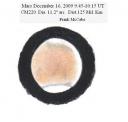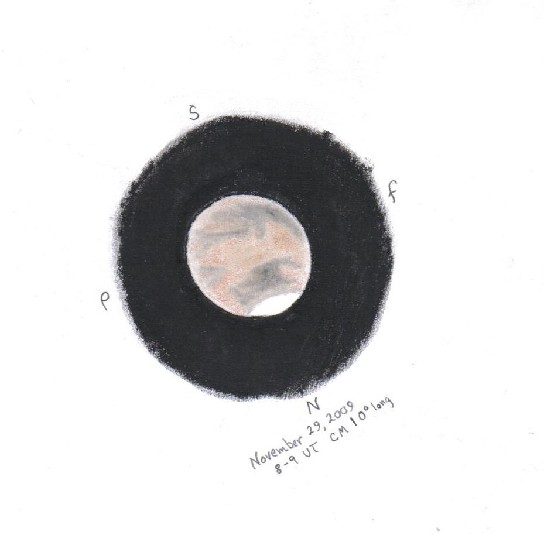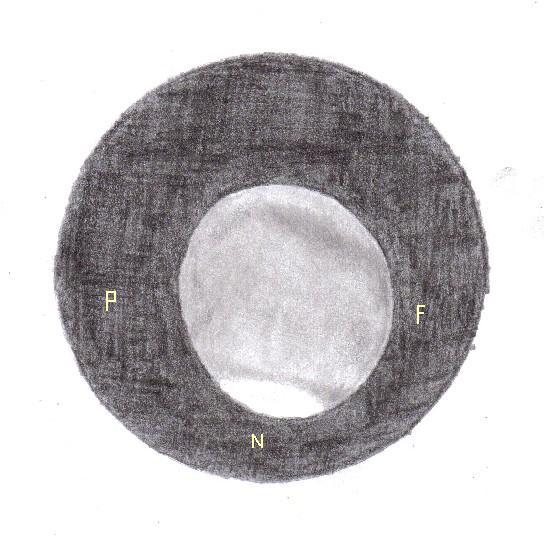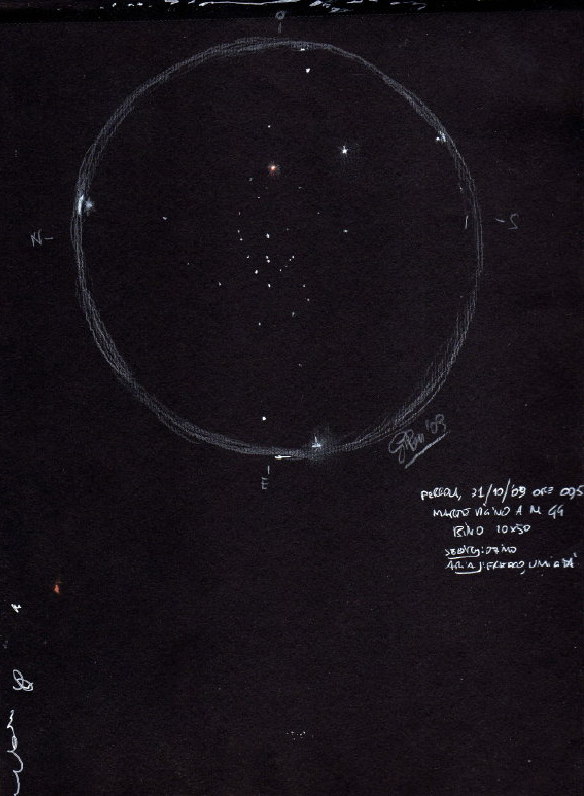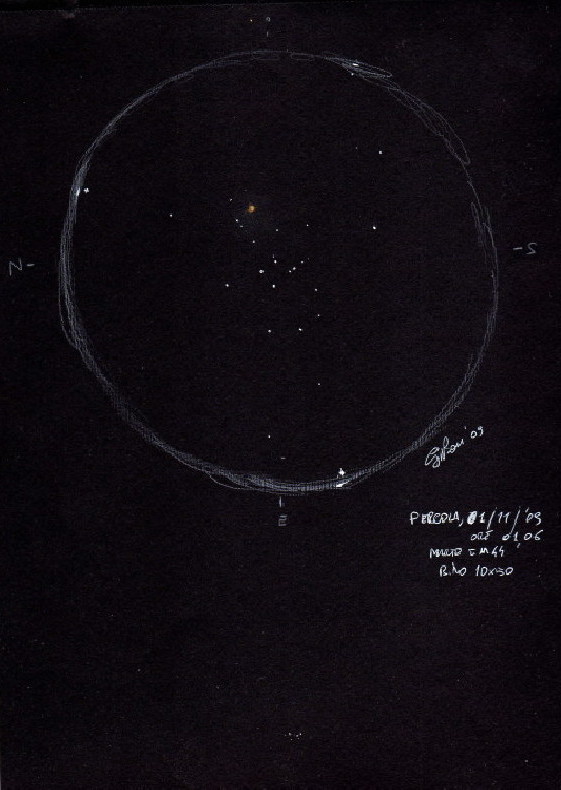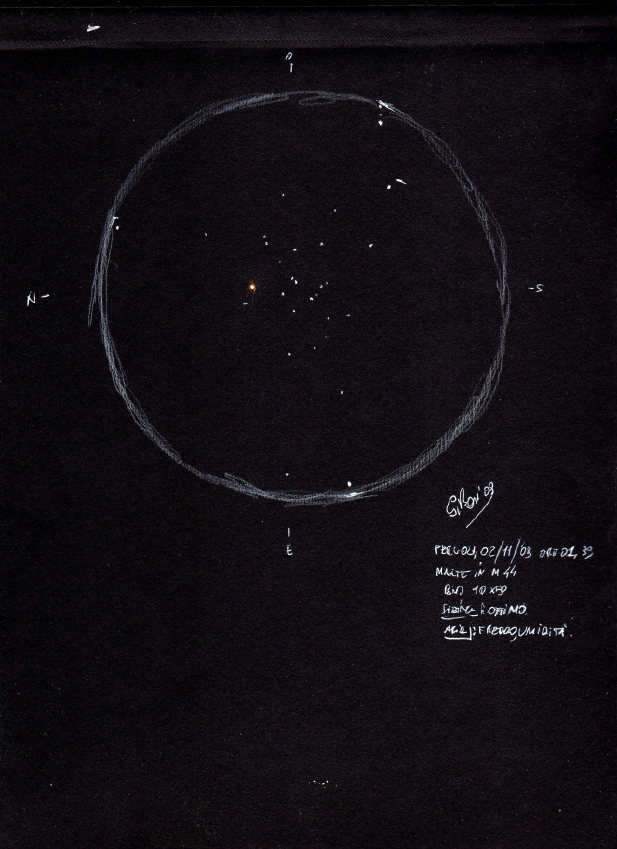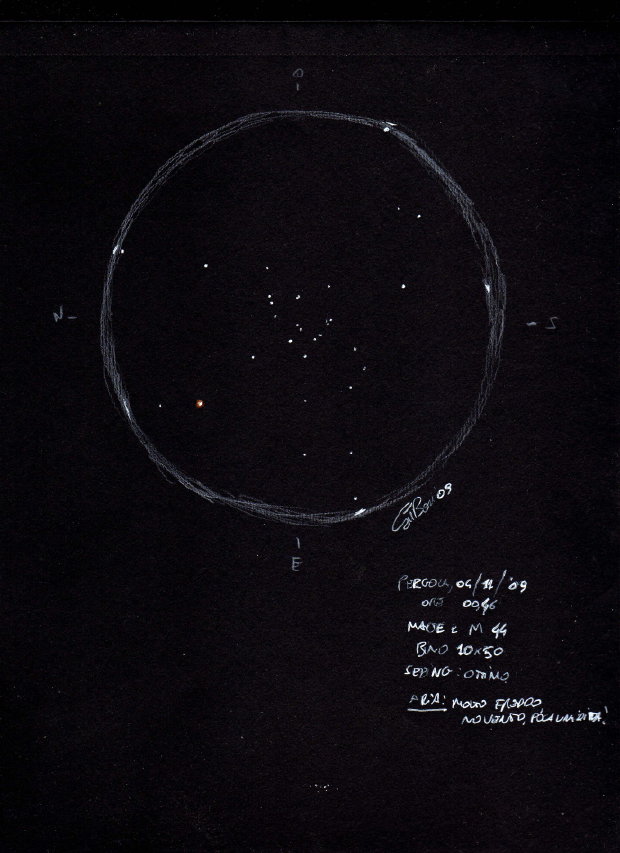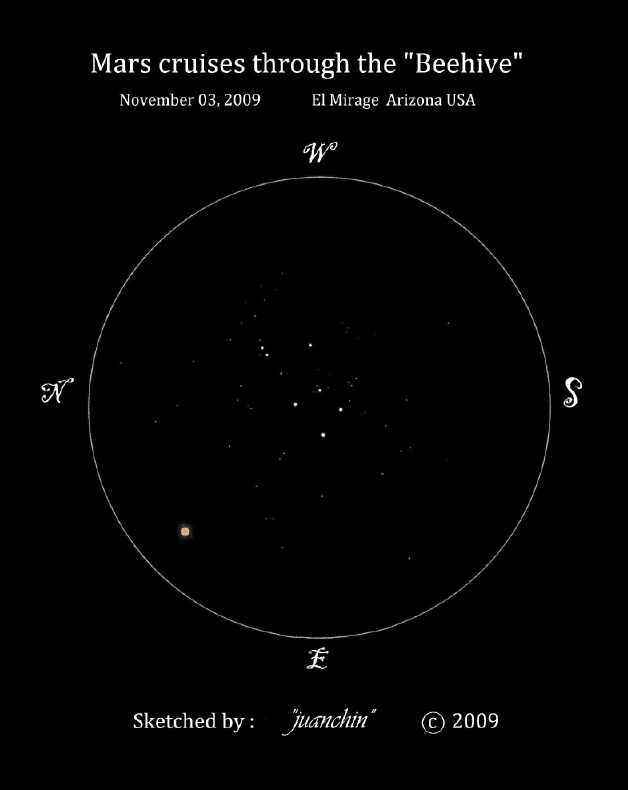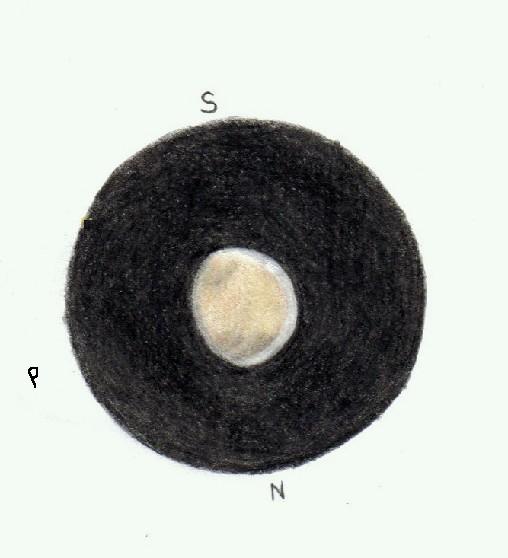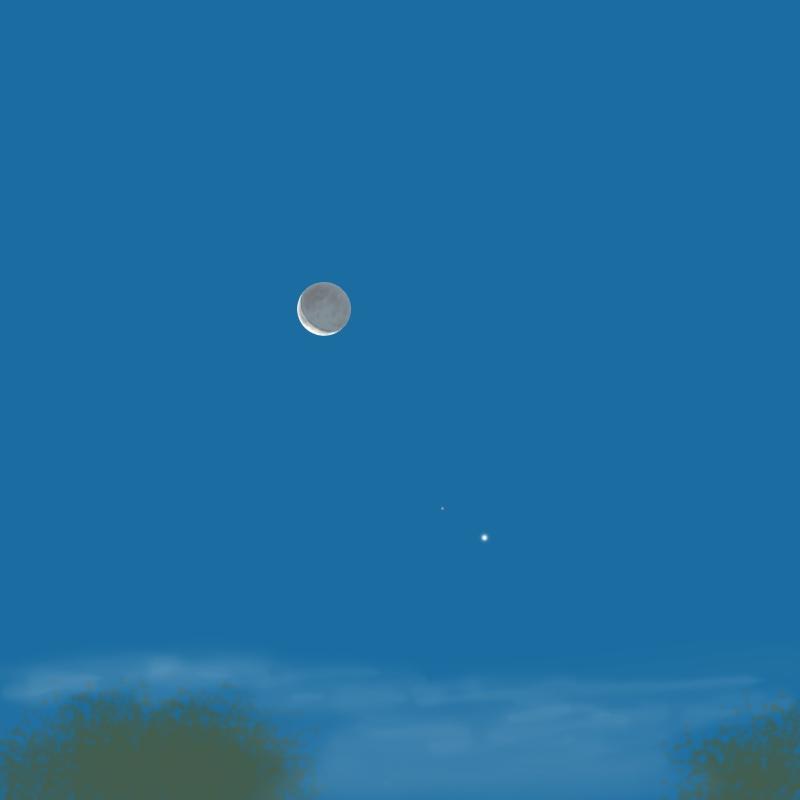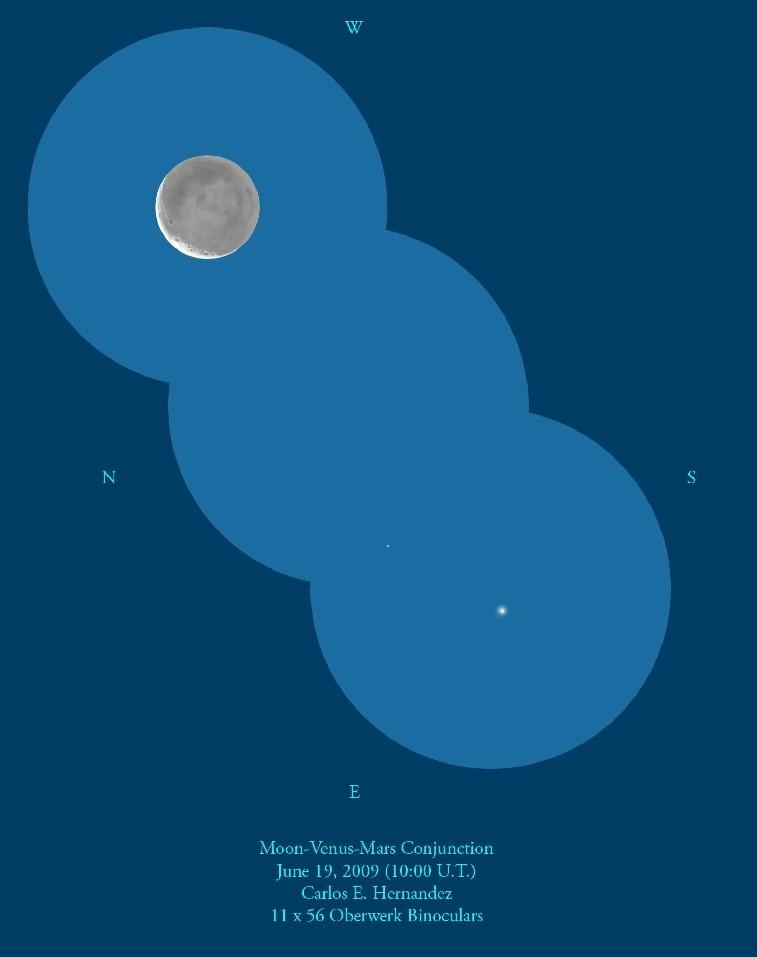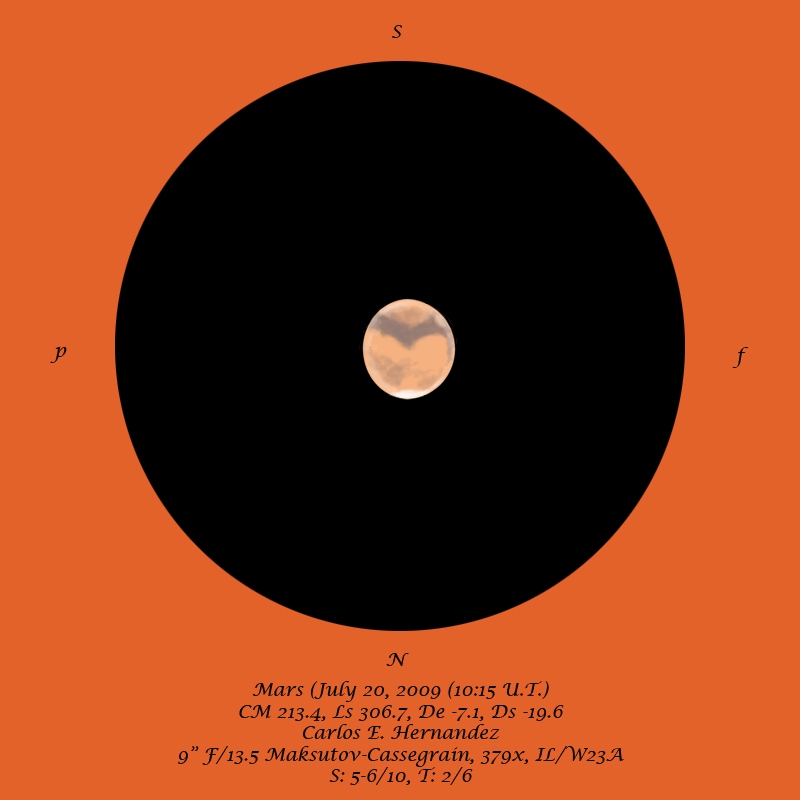
Mars at 10:15 UT on
July 20, 2009
Sketch and Details by Carlos E. Hernandez
I was able to make my first observation of Mars on July 20, 2009 (10:15 U.T.) using my 9-inch (23-cm) F/13.5 Maksutov-Cassegrain. I was excited to observe the red planet once again after the last opposition. I hope to follow Mars as much as possible.
Date (U.T.): July 20, 2009
Time (U.T.): 10:15
CM: 213.4*W
Ls: 306.7* (Mid-Martian Northern Winter/Southern Summer)
De:-7.1*, Ds: -19.6*, Phase 92%, Diameter: 5.2 arc-seconds
Instrument: 9-inch (23-cm) F/13.5 Maksutov-Cassegrain
Magnification: 379x
Filters (Wratten): 23A (Light Red)
Seeing(1-10): 5-6, Antoniadi (I-V): III
Transparency (1-6): 2/6 (Dawn)
Notes:
The South Polar Region (SPR) appears to be obscured by a very bright to extremely bright (8-9/10) haze. Mare Cimmerium appears dark to dusky (3-4/10) towards the south-preceding (Sp) limb. Electris, Eridania, and Ausonia appear dusky to bright (4-7/10). Zephyria, Aeolis, and Aethiopis appear bright (7/10). Amazonis and Arcadia appear mottled and dusky to shaded (4-6/10). Elysium, Aetheria, Libya, Cebrenia, and Panchaia appear bright (7/10). Syrtis Major appears as a thin, dusky (4/10) streak along the following limb and partially obscured by a very bright to extremely bright (8-9/10) morning limb haze (MLH). The North Polar Cap (NPC) appears brilliant (10/10) along the northern limb.
I was unable to make an observation of Mars using a blue (Wratten 38A) due to excessive sky lighting.
A digital image produced in Photoshop CS3. The best of luck in your observations of Mars.
Carlos




